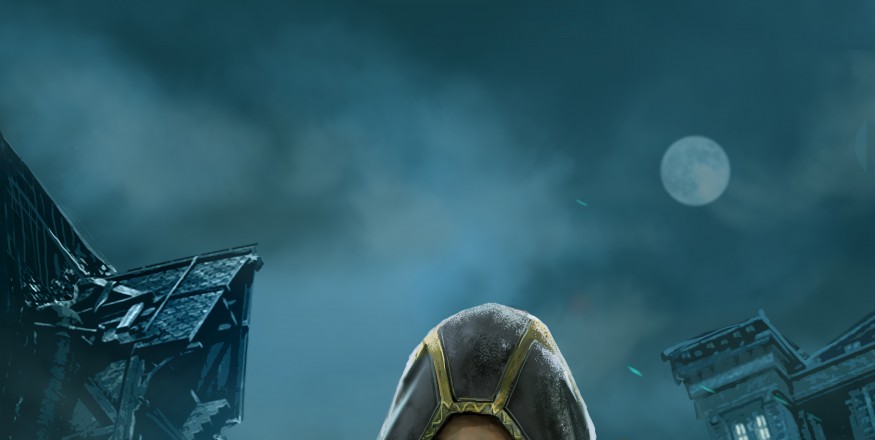“I know not which of the hells it crawled out of, but clearly this demon does not belong in our world!” – Bernius Berkely, late researcher.
While many laugh at the man I’ve quoted above for believing that chimeras are demons, I think it wise to take a step back instead. This man was indeed wrong about that, but he did a great deal to propel research in his time. Much of the work he did is still in use today.
He did incredible work and was a true visionary.
So, why did he make this mistake? It’s important to remember that he first started studying chimeras when there was a fraction of the information that’s available today. And, really, can you blame someone for looking at such a horror and thinking it’s a demon?
I certainly can’t.
It’s taken extensive testing of captured chimeras to determine that they aren’t demons. But, this is all off-topic. It’s time to dive right into discussing the chimera.
A chimera has three heads, a lion’s and a goat’s spring from the front of it, and its tail is that of a snake, ending in yet another head. Do you begin to see now why someone might take one look at such a creature and scream “demon!”?
But, a chimera has reason to be far more dangerous than just looking horrifying.
It is endowed with what appears to be some form of magical power, discerning what is magic and what isn’t can be difficult at times.
But, let’s run through what a chimera is capable of and perhaps one day you will be the researcher to discern what is indeed magical and what is… something else.
To start with, chimeras project something similar to a wizard’s aura of fear spell. As if their visage wasn’t terrifying enough, they can turn even the bravest hearts into meek, quivering puddles. The fear is gripping, and damn-near impossible to overcome without the use of magic.
Perhaps you’ve read some of the stories of heroes facing a chimera and simply quivering on the spot before being slowly devoured? Maybe you yelled at the hero in the pages or imagined how you might behave differently. I regret to inform you, you would meet the same fate.
So, make sure to protect yourself against that.
But, the chimera’s bite is much worse than its bark, as they say.
It is exceedingly fast and strong. Able to tear through an army of men as though they were mice before a cat. It is also immensely agile and dodges attacks nimbly. But, should your blow strike true, odds are that it will simply bounce off the impossibly tough hide.
And, should you draw blood, you’ll find that theirs is acidic. Take care that it doesn’t eat through the metal of your blade and leave you holding a hilt and not much else.
But, that’s far from the worst a chimera has to offer.
Each head has specific properties. The Lion’s head can breathe fire, not unlike a dragon’s flames. It also has exceedingly sharp vision, hearing, and smell.
The goat’s head breathes ice and seems to be able to produce a focused version of the fear spell. When it fixes its gaze on someone, it can render even those with protection helpless with fear.
The snake’s head that makes up the chimera’s tail is long and sinuous. It’s able to deal with whatever threat the other heads cannot. There is no angle you can approach a chimera from that it cannot see you and fight back. The snake head in particular, is somehow able to see living things even in total darkness. How it does this, nobody knows. Not yet at least.
Perhaps a detect life spell? One can only guess.
Its sense of smell or taste is also easily the best of all the heads. Its bite is venomous to the extreme, but given the enormous size of the head, few survive long enough for us to have an accurate measure of how deadly exactly.
It also breathes poisonous gas.
There was some research conducted a few years back where the researchers used human test subjects with chimeras to discern how deadly the venom was and other such information. Unfortunately, their research was as flawed as their morals, and their work is of little use.
Now then… how big can a chimera get?
As large as a small house is for certain. The younger they are, the smaller they are, so they are often much smaller than this. A few have been said to be as large as the most massive of dragons, but these reports are unconfirmed.
Admittedly, chimera are fearsome, dangerous creatures, but there is more than this that led many to believe they were demonic for a long time.
You see, chimeras are nothing like gryphons, elementals, witches, or the many creatures I’ve mentioned that are often good at heart.
No, chimeras are monsters in the truest sense. They have voracious appetites, not unlike an ogre, and have been known to devour entire towns. But, even with their endless hunger, they don’t always eat their kills.
Chimeras are somewhat intelligent creatures, and often toy with their prey. They delight in tormenting other creatures. They delight in destroying just for the sake of destruction it seems.
And, not just towns, villages, and the occasional city.
They lay waste to forests, poison waterholes with their snake head, destroy ships, watchtowers, set fields on fire, cause rockslides, avalanches, and generally anything that causes other creatures to suffer and die.
They are also well known for their conflicts with gryphons, where the gryphons usually die I’m sad to say…
It’s easy to see why people once thought these creatures were demonic. As to what they actually are or how they originated… there are several theories floating around at the moment. Some still cling to the idea that they are demonic in some way, perhaps in part if not in whole, others believe they may be the product of an experiment. Perhaps by a powerful wizard, lich, demon, or maybe even a god?
Given their excessively violent nature and keen senses, they are exceedingly hard to observe. But, many researchers have spent long, stressful hours watching these creatures. Often at the expense of their own lives.
But, thanks to their efforts, we know at least some things about what chimeras are like in other areas of their lives.
Chimeras mate in what looks like more of a battle to the death than anything else and often leads to at least one of them being killed. Then, if the survivor is female, she later gives birth to a litter.
But, she won’t stay to look after them and will immediately leave while her children are still gaining their bearings. This is the smallest chimeras ever get, and the most vulnerable they’ll ever be. But, they’re still deadly.
With their mother gone, the child chimeras either move in opposite directions or kill and even eat each other.
A few have been known to leave in pairs, but this is extremely rare. Even rarer, some chimeras actually nest together. Two is the most you’re likely to find though, and such things are so rare as to be things of legend.
Even those that stay together never seem to get along.
But, regardless. Those who survive will immediately begin following the habits of their parents, leading some to believe it’s instinctual. They devour, destroy, and grow larger and more powerful.
Some have tried to tame chimeras, and the results tend to be utterly disastrous. There are texts referring to it having been achieved during The Great War, but there is so little left from that time that it’s impossible to know if this was true or not. Or, how they did it.
Perhaps that is for the best. War is a bloody, monstrous affair without chimeras being added to the mix.
- Nicholas Wolfram, Professor of Monsterology at Lestria University
ns13.59.243.24da2





















